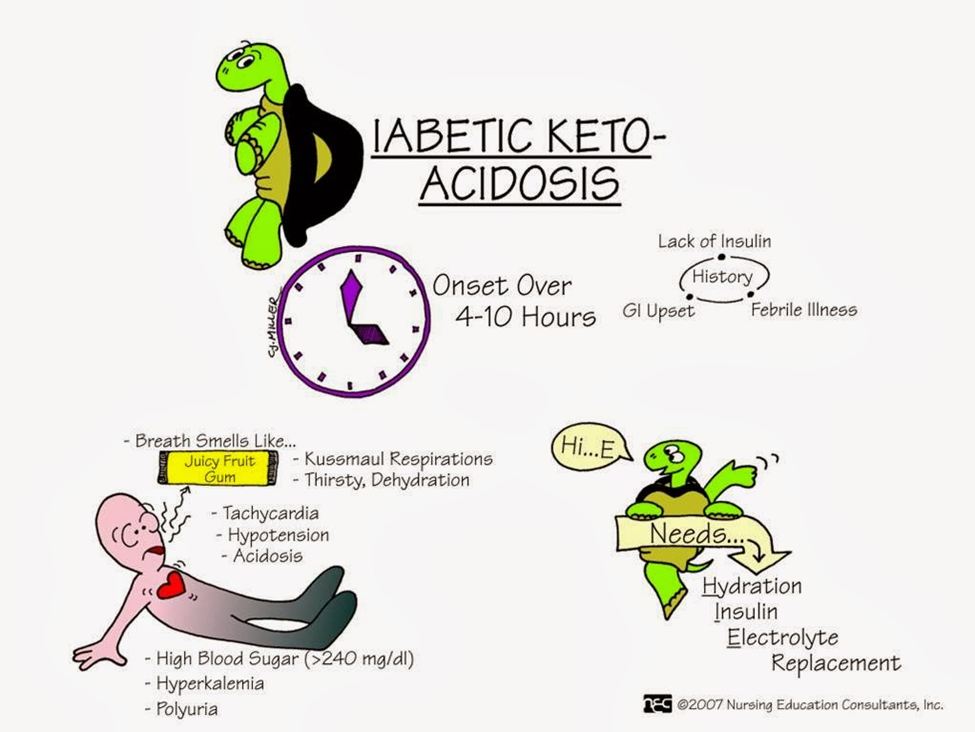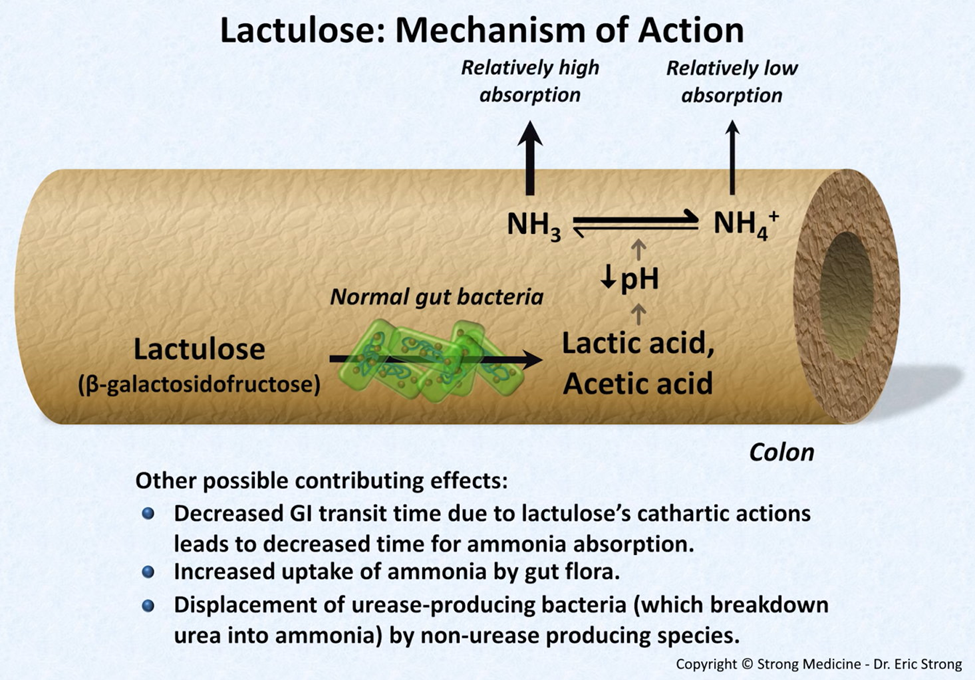A nurse is caring for a client diagnosed with diabetic ketoacidosis. Which of the following manifestations should the nurse expect?
Blood glucose level below 40 mg/dL
Acetone odor to breath
Malignant hypertension
Cheyne-Stokes breathing
The Correct Answer is B
A. Blood glucose level below 40 mg/dL is not typical in diabetic ketoacidosis. DKA is characterized by hyperglycemia, and blood glucose levels are usually significantly elevated.
B. Acetone odor to breath is a classic sign of diabetic ketoacidosis. The presence of ketones, including acetone, can result in a fruity or sweet odor to the breath. This is often referred to as "ketone breath."
C. Malignant hypertension is not a typical manifestation of diabetic ketoacidosis. DKA is more commonly associated with dehydration, electrolyte imbalances, and metabolic acidosis.
D. Cheyne-Stokes breathing is not a characteristic respiratory pattern seen in diabetic ketoacidosis. Respiratory changes in DKA are more likely to involve rapid and deep breathing (Kussmaul respirations) as the body attempts to compensate for metabolic acidosis.

Nursing Test Bank
Naxlex Comprehensive Predictor Exams
Related Questions
Correct Answer is ["A","B","C","D"]
Explanation
A. Increase physical activity and daily exercise.
Regular physical activity helps improve insulin sensitivity, manage blood glucose levels, and lower the risk of cardiovascular complications associated with diabetes.
B. Reduce cholesterol and saturated fat intake.
Managing cholesterol levels and reducing saturated fat intake can help lower the risk of cardiovascular disease, which is a common complication of diabetes.
C. Maintain optimal blood pressure to prevent kidney damage.
Controlling and maintaining blood pressure within optimal ranges is crucial in preventing kidney damage, a common complication of diabetes.
D. Enroll in a smoking-cessation program.
Smoking increases the risk of cardiovascular complications and can exacerbate other diabetes-related health issues. Quitting smoking is important in reducing the risk of complications.
E. Sustain hyperglycemia to reduce deterioration of nerve cells.
Sustaining hyperglycemia (high blood sugar levels) is detrimental and contributes to the progression of diabetic complications, including nerve damage (neuropathy). Lowering and controlling blood glucose levels are essential in preventing complications rather than sustaining hyperglycemia.
Correct Answer is B
Explanation
A. Lactulose is not used to decrease potassium levels. It is a laxative that works by drawing water into the colon, softening stools and promoting bowel movements.
B. Lactulose is used to decrease ammonia levels in clients with cirrhosis. Ammonia is a byproduct of protein metabolism, and when the liver is compromised, it may not effectively convert ammonia into urea, leading to elevated ammonia levels in the bloodstream. Lactulose helps reduce ammonia absorption in the colon.
C. Lactulose does not decrease glucose levels significantly. It is not primarily used as an antidiabetic medication.
D. Lactulose does not affect bicarbonate levels significantly. It primarily targets ammonia reduction in clients with cirrhosis.

Whether you are a student looking to ace your exams or a practicing nurse seeking to enhance your expertise , our nursing education contents will empower you with the confidence and competence to make a difference in the lives of patients and become a respected leader in the healthcare field.
Visit Naxlex, invest in your future and unlock endless possibilities with our unparalleled nursing education contents today
Report Wrong Answer on the Current Question
Do you disagree with the answer? If yes, what is your expected answer? Explain.
Kindly be descriptive with the issue you are facing.
